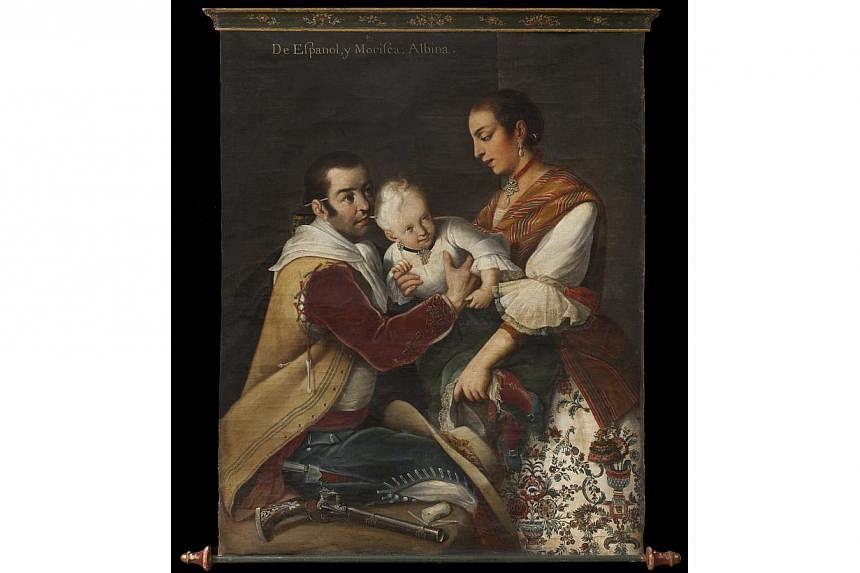LOS ANGELES (Reuters) - An 18th-century painting long considered lost has been found in the home of a California lawyer whose family had held the piece for generations but was unaware of its origins, a Los Angeles museum official said on Wednesday.
The painting, lauded as a masterpiece of colonial Mexican art depicting mixed-race families of the era, has been acquired by the Los Angeles County Museum of Art, known as LACMA.
Museum curator Ilona Katzew said the painting was one of two missing pieces from a set of 16 painted by Miguel Cabrera, a master portraitist in high demand in the religious and social elite of New Spain, a Spanish territory that included what is now Mexico. "It's one of the most important paintings from colonial Mexico to come up in the market in the past 10 years," Ms Katzew said, estimating the auction value at US$1 million (S$1.36 million).
The painting, From Spaniard and Morisca, Albino, depicts a Spanish man and a mulatto woman dressed in elegant clothes and jewelry who exchange tender looks while holding a fair-skinned child with light blonde hair. Hung on a scroll, the piece measures more than 1.20m tall and 90cm wide.
Painted in 1763, the artwork came to the museum through Christina Jones Janssen, an attorney in Northern California whose family had held the piece for several generations.
According to family lore, Ms Janssen's great-grandparents received the work in the late 1920s as a gift from Mr David Gray, the son of one of the first Ford Motor Co. presidents. Mr Gray had purchased it in Spain.
The painting travelled to various homes in Ms Janssen's family over the years. When she noticed the canvas coming loose from the scroll, she tucked it under her couch for safekeeping. Last year, to fulfill her late father's wish to discover its origins, Ms Janssen began sleuthing.
Art experts quickly identified the work as belonging to Cabrera's set of castas, a popular 18th century genre depicting the racial mixing of Spaniards, Africans and indigenous people in colonial Mexico.
Ms Janssen has made a partial donation of the piece to LACMA. A trustee is funding the rest of the sum, which the museum declined to disclose.
According to Ms Katzew, Cabrera's casta is widely considered the best of the genre. Fourteen other pieces of Cabrera's set reside in museums and private collections, but one is still missing.

